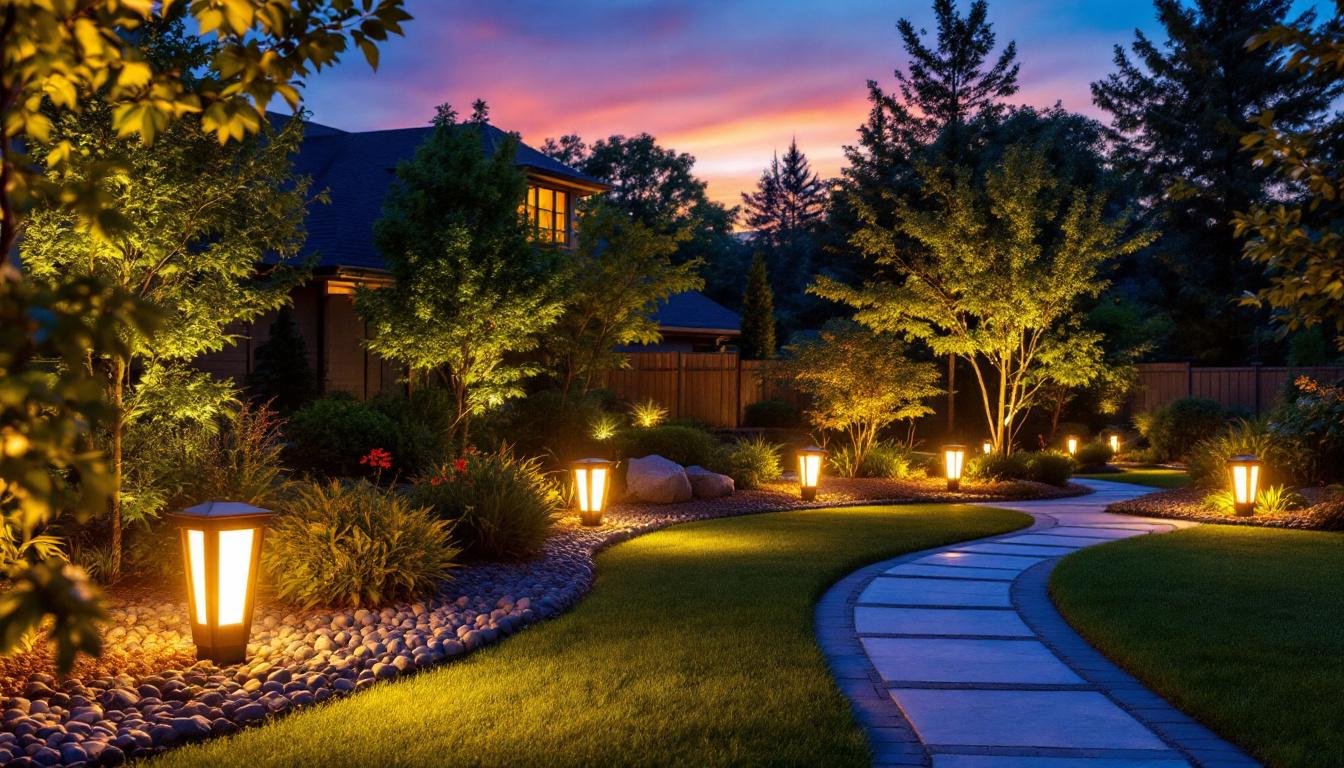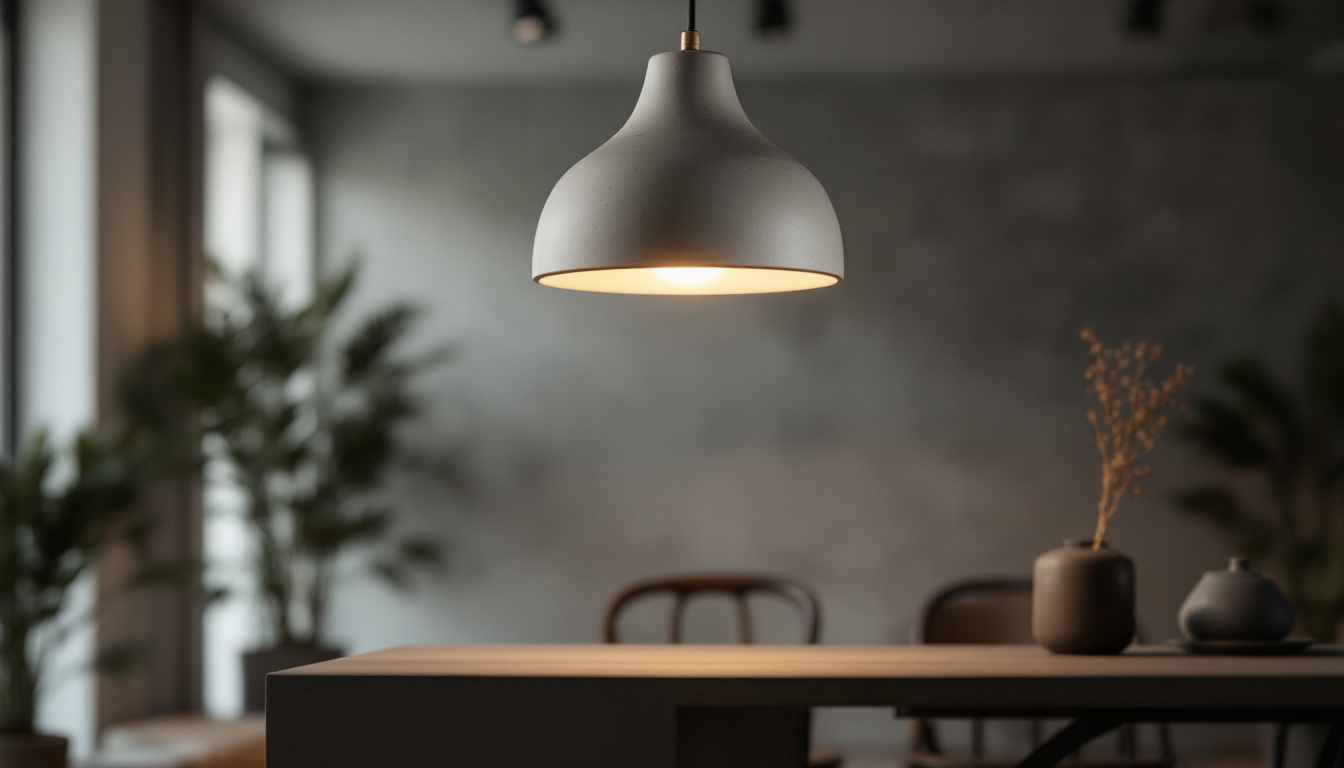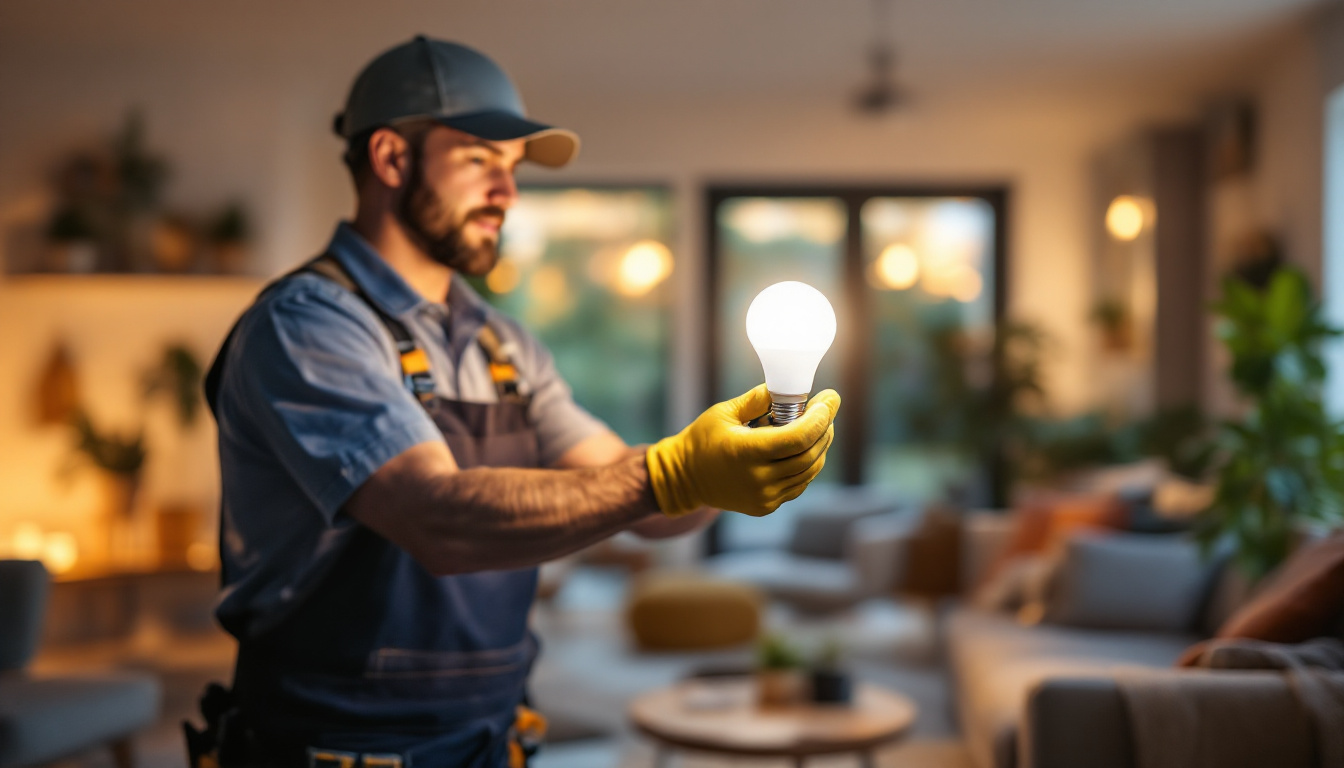
Landscape down lighting can transform outdoor spaces, creating a warm and inviting atmosphere while enhancing safety and functionality. However, even the most experienced lighting contractors can make mistakes that compromise the effectiveness of their designs. Understanding these common pitfalls can help contractors deliver superior results and enhance customer satisfaction.
Before diving into the common mistakes, it is essential to grasp the fundamentals of down lighting. This technique involves positioning lights above the area to be illuminated, casting light downward to create a soft, diffused glow. The primary purpose of down lighting is to enhance visibility while maintaining a natural ambiance. This method not only serves practical purposes but also plays a crucial role in setting the mood and tone of a space, making it inviting and comfortable.
Down lighting is often employed in various settings, including gardens, patios, and pathways. The right placement and intensity can highlight architectural features, illuminate walkways, and create focal points in the landscape. For example, strategically placed down lights can accentuate the texture of a stone wall or the delicate foliage of a tree, adding depth and interest to the outdoor environment. However, achieving the desired effect requires careful planning and execution, as well as an understanding of how light interacts with different surfaces and colors.
One of the critical factors in successful down lighting is the placement of fixtures. Improper positioning can lead to uneven lighting, shadows, and glare, which detracts from the overall aesthetic. It is crucial to consider the height and angle of the fixtures, as well as the surrounding landscape elements. For instance, lights placed too high may fail to cast sufficient illumination on the ground, while those positioned too low can create harsh shadows that disrupt the visual flow of the space.
Contractors should take the time to assess the area during the day and night to understand how natural light interacts with the space. This evaluation will help determine the optimal locations for fixtures, ensuring that they effectively illuminate the intended areas without creating unwanted shadows or bright spots. Additionally, incorporating dimmable fixtures can provide flexibility, allowing homeowners to adjust the brightness according to the occasion, whether it’s a lively gathering or a quiet evening outdoors.
Another common mistake is selecting inappropriate fixtures for the specific landscape. Not all down lighting fixtures are created equal, and the wrong choice can lead to poor performance. Factors such as the type of bulb, beam angle, and material should be considered when selecting fixtures. The design of the fixture itself can also impact the overall aesthetic; for example, sleek, modern fixtures may complement contemporary architecture, while vintage-style lanterns can enhance a rustic setting.
For instance, LED fixtures are often preferred for their energy efficiency and longevity. However, contractors must ensure that the color temperature aligns with the desired ambiance. A warm white light may create a cozy atmosphere, while a cooler light can feel stark and uninviting. Moreover, the beam angle of the fixtures plays a significant role in how light is distributed across the landscape. A narrow beam can create dramatic highlights, while a wider beam can provide a more even wash of light, making it essential to choose wisely based on the specific features you wish to illuminate.
Even seasoned contractors can fall victim to several common mistakes when implementing landscape down lighting. Awareness of these pitfalls can help avoid costly rework and ensure a successful project from the outset.
One significant oversight is failing to consider the landscape’s natural features. Trees, shrubs, and other elements can significantly impact lighting design. For example, placing fixtures too close to a tree can result in unwanted shadows or even light being blocked entirely.
Contractors should take the time to analyze the landscape’s layout and identify key features that should be highlighted. This approach not only enhances the beauty of the space but also creates a more cohesive lighting design that complements the environment. Additionally, understanding the seasonal changes in foliage can inform decisions about when and where to place fixtures. For instance, deciduous trees may lose their leaves in winter, revealing features that were previously obscured, thus requiring a different lighting strategy during colder months.
Another common mistake is not properly assessing the light levels and brightness required for the space. Insufficient lighting can lead to safety hazards, while overly bright fixtures can create discomfort and detract from the overall experience.
It is essential to strike a balance between functionality and aesthetics. Contractors should consider the purpose of the lighting—whether it is for safety, ambiance, or highlighting specific features—and adjust the brightness accordingly. Utilizing dimmers or adjustable fixtures can provide flexibility in achieving the desired lighting effect. Moreover, experimenting with different color temperatures can also enhance the mood of the space; warmer tones may create a cozy atmosphere, while cooler tones can offer a more modern and crisp feel, adding another layer of depth to the lighting design.
Local regulations and guidelines regarding outdoor lighting can vary significantly. Ignoring these rules can lead to fines, required rework, or even project delays. It is crucial for contractors to familiarize themselves with local codes before beginning any installation.
In addition to regulations, contractors should also consider the impact of light pollution on the surrounding environment. Using fixtures that minimize glare and directing light downward can help mitigate these issues while ensuring compliance with local standards. Furthermore, engaging with the community can provide insights into local preferences and concerns regarding outdoor lighting, fostering a sense of collaboration and ensuring that the project aligns with the neighborhood’s character and values. By being proactive in these areas, contractors can not only avoid potential pitfalls but also enhance their reputation within the community, leading to more successful projects in the future.
To avoid the common mistakes outlined above, contractors can adopt several best practices that enhance the effectiveness of landscape down lighting. These practices not only improve the quality of the lighting design but also contribute to client satisfaction and project success.
Before starting any project, conducting a thorough site assessment is essential. This process involves evaluating the landscape during different times of the day to understand how natural light interacts with the space. Observing how shadows are cast and identifying key features to highlight will inform the overall lighting design.
Additionally, engaging with clients during this phase can provide valuable insights into their preferences and expectations. Understanding their vision will help tailor the lighting design to meet their needs effectively.
Employing a mix of lighting techniques can enhance the overall effectiveness of the design. While down lighting is a powerful tool, combining it with other methods, such as uplighting or path lighting, can create a more dynamic and visually appealing landscape.
For instance, uplighting can accentuate trees or architectural features, while path lighting ensures safe navigation through walkways. By incorporating multiple techniques, contractors can create a layered lighting effect that adds depth and interest to the outdoor space.
In today’s environmentally conscious world, energy efficiency is more important than ever. Utilizing energy-efficient fixtures, such as LED lights, not only reduces energy consumption but also lowers maintenance costs over time.
Contractors should also consider incorporating smart lighting systems that allow for remote control and scheduling. These systems can further enhance energy efficiency by ensuring lights are only on when needed, contributing to both cost savings and environmental sustainability.
Effective communication with clients is crucial throughout the lighting design and installation process. Educating clients about the benefits of down lighting, as well as the potential pitfalls, can foster a collaborative relationship and lead to better outcomes.
One of the most significant aspects of client communication is setting realistic expectations. Clients may have specific visions for their outdoor spaces, but it is essential to align those visions with practical considerations. Discussing factors such as budget, timeline, and potential challenges can help manage expectations and prevent misunderstandings.
Providing clients with visual aids, such as sketches or digital renderings, can also enhance their understanding of the proposed design. This approach allows clients to visualize the final outcome and make informed decisions throughout the process.
Once the project is complete, offering guidance on maintenance is essential for ensuring the longevity and effectiveness of the lighting system. Educating clients on how to care for their fixtures, including cleaning and bulb replacement, can help maintain the desired lighting effect over time.
Additionally, discussing seasonal adjustments, such as repositioning fixtures or altering brightness levels, can enhance the overall experience as the landscape evolves throughout the year.
Landscape down lighting is a powerful tool for enhancing outdoor spaces, but it requires careful planning and execution to achieve the desired results. By understanding the common mistakes that lighting contractors make and adopting best practices, professionals can deliver exceptional lighting designs that meet client expectations and elevate the beauty of any landscape.
Through thorough site assessments, effective communication, and a commitment to energy efficiency, contractors can create stunning outdoor environments that inspire and delight. Embracing these principles will not only improve the quality of lighting installations but also enhance the reputation and success of lighting contractors in a competitive industry.
Ready to avoid common down lighting pitfalls and elevate your landscape projects? At LumenWholesale, we provide lighting contractors with the high-quality, spec-grade lighting solutions you need to succeed. Our extensive selection of products ensures you have access to the best in the industry, all at wholesale prices that respect your bottom line. Say goodbye to local distributor markups and hello to hassle-free bulk buying with free shipping. Don’t compromise on quality or value—choose LumenWholesale for lighting that meets the highest standards of performance and reliability. Wholesale Lighting at the Best Value is just a click away. Enhance your lighting designs today with LumenWholesale.

Explore the essential role of concrete pendant lamps in modern lighting design and discover why they are a must-have for lighting contractors.

Discover the essential insights every lighting contractor needs about Type A LED bulbs.

Discover the ideal lumen levels for illuminating any space and explore the top benefits this knowledge offers to lighting contractors.

Discover how lighting contractors can enhance their projects with outdoor light and motion sensors.